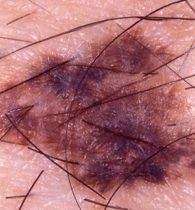- General Dermatology
- Eczema
- Chronic Hand Eczema
- Alopecia
- Aesthetics
- Vitiligo
- COVID-19
- Actinic Keratosis
- Precision Medicine and Biologics
- Rare Disease
- Wound Care
- Rosacea
- Psoriasis
- Psoriatic Arthritis
- Atopic Dermatitis
- Melasma
- NP and PA
- Skin Cancer
- Hidradenitis Suppurativa
- Drug Watch
- Pigmentary Disorders
- Acne
- Pediatric Dermatology
- Practice Management
- Prurigo Nodularis
Article
Managing dysplastic nevi: Early identification curtails melanoma incidence
Early identification of dysplastic nevi (DM) is crucial, as patients with DM are at significantly greater risk of developing malignant melanoma. An expert advocates a DN management strategy that utilizes total cutaneous examination, total cutaneous photography and dermoscopy.

Key Points

According to Dr. Kopf, clinical experience and research have shown that DN identifies a subset of the United States population that is at significant increased risk for developing melanoma, and that melanoma can begin in DN, which are also known as atypical moles. Identification of DN is crucial, because it can be an early indicator of deadly melanoma.
"Only about 5 percent of skin cancers are melanoma, but 75 percent of the deaths from skin cancer are due to melanoma. So, even though basal cell and squamous cell carcinomas are more prevalent, melanomas are more lethal," Dr. Kopf tells Dermatology Times.

"This is based solely on the clinical appearance of the lesion. DN looks like a melanoma and, in fact, can be indistinguishable from a melanoma," Dr. Kopf says.
Dr. Kopf and colleagues further refined their identification of patients who have a significantly higher risk of melanoma by classifying a subset of DN patients who have "classic atypical mole syndrome," or CAMS.
"Our 10-year follow-up data shows that 10.7 percent of patients within this subset of DN developed melanoma within 10 years, compared to a control population in which 0.6 percent developed melanoma within the same period," he says (Arch Dermatol. 1994 Aug;130(8):993-998).
Patients with CAMS have a triad of 100 or more moles, at least one mole resembling melanoma, and at least one mole 8 mm or larger in diameter.
This subset of individuals has one of the highest risks for melanoma ever reported, according to Dr. Kopf. Once people with CAMs have developed a single melanoma, they are at a very high risk of developing additional primary melanomas, according to a study performed by Dr. Kopf and colleagues at New York University.
"Thirty-five percent of our patients who had a melanoma developed an additional new primary melanoma within 10 years. The lifetime risk in the general population is only about a 1 percent," Dr. Kopf says.
'Doing something right'
Dr. Kopf and colleagues use and advocate a DN management strategy that utilizes total cutaneous examination, total cutaneous photography and dermoscopy.
"We have not had a single death from a newly developed melanoma in our patients with DN, so we must be doing something right," Dr. Kopf says.
Dr. Kopf recommends total cutaneous examination on the initial visit and each follow-up visit.
For thorough examination of the scalp, Dr. Kopf suggests using a hair blow dryer set on cool.
"It can be very difficult to examine the scalp, but with a hair blower, it's usually quite easy," he says.
In some cases, Dr. Kopf employs total cutaneous photography. "This is especially helpful in those areas, such as the trunk and the limbs, which have the highest concentration of melanomas," he says.





